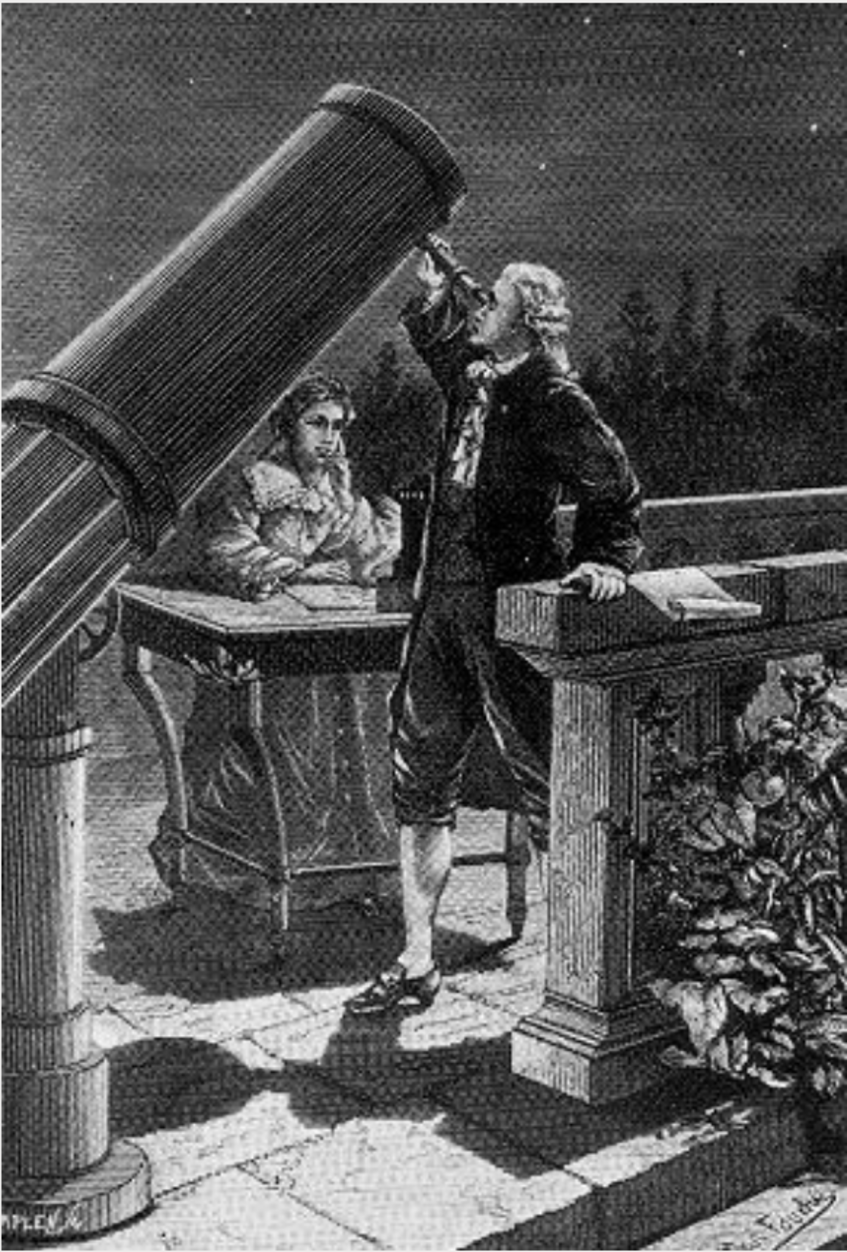History
Scientific Breakthrough

Scientific Breakthrough
The scientific breakthrough from hobby astronomer to recognised scientist of William Herschel was made through his discovery of Uranus. While he was conducting a survey of the whole northern sky with his telescope, he discovered the first planet of the solar system which was not visible to the eye before. This sensation quickly brought him into the prestigious Royal Society and King George III provided Wilhelm with a salary to continue his work as astronomer.
From this point on, Wilhelm devoted his time mainly to astronomy and turned his back to the musical world. His sister Caroline followed him as personal assistant, who was more and more trained to carry out astronomical research as well. Together they built a gigantic 40 foot long reflecting telescope with a mirror of 1.2 meters diameter and started to carry out systematic surveys of stars, double stars, and nebulae. In 1786, Caroline experienced her own scientific breakthrough when she discovered a comet on her own. This comet was the first one to ever be discovered by a woman and Caroline published a scientific article about the comet, which brought her acknowledgement as female astronomer. She continued to focus her work on the search for new comets and had some more successful discoveries during her career. She also received the exceptional honour of being payed for her scientific work by the king himself.
William Herschel observed the sun as well and studied the temperature distribution within the solar spectrum. In 1800, while he conducted experiments on that topic, he discovered the infrared radiation of the sun, which is invisible for our eyes. The consequences of this discovery could not have been known at that time, but William Herschel laid the foundation for the future discovery and investigation of the complete electromagnetic spectrum with this important detection. Today, for example the infrared space-telescope "Herschel" is named after him.
